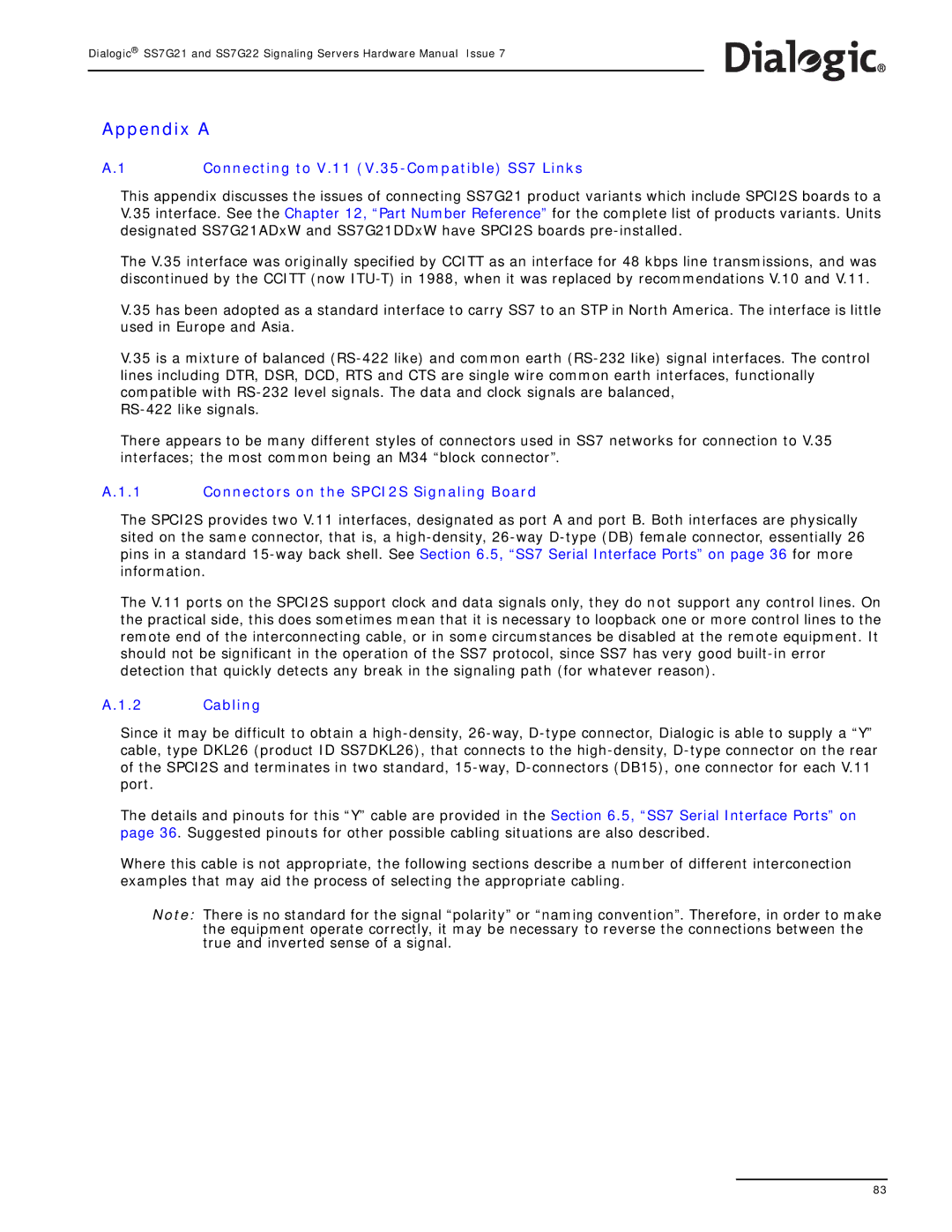
Dialogic® SS7G21 and SS7G22 Signaling Servers Hardware Manual Issue 7
Appendix A
A.1 | Connecting to V.11 |
This appendix discusses the issues of connecting SS7G21 product variants which include SPCI2S boards to a V.35 interface. See the Chapter 12, “Part Number Reference” for the complete list of products variants. Units designated SS7G21ADxW and SS7G21DDxW have SPCI2S boards
The V.35 interface was originally specified by CCITT as an interface for 48 kbps line transmissions, and was discontinued by the CCITT (now
V.35 has been adopted as a standard interface to carry SS7 to an STP in North America. The interface is little used in Europe and Asia.
V.35 is a mixture of balanced
There appears to be many different styles of connectors used in SS7 networks for connection to V.35 interfaces; the most common being an M34 “block connector”.
A.1.1 Connectors on the SPCI2S Signaling Board
The SPCI2S provides two V.11 interfaces, designated as port A and port B. Both interfaces are physically sited on the same connector, that is, a
The V.11 ports on the SPCI2S support clock and data signals only, they do not support any control lines. On the practical side, this does sometimes mean that it is necessary to loopback one or more control lines to the remote end of the interconnecting cable, or in some circumstances be disabled at the remote equipment. It should not be significant in the operation of the SS7 protocol, since SS7 has very good
A.1.2 Cabling
Since it may be difficult to obtain a
The details and pinouts for this “Y” cable are provided in the Section 6.5, “SS7 Serial Interface Ports” on page 36. Suggested pinouts for other possible cabling situations are also described.
Where this cable is not appropriate, the following sections describe a number of different interconection examples that may aid the process of selecting the appropriate cabling.
Note: There is no standard for the signal “polarity” or “naming convention”. Therefore, in order to make the equipment operate correctly, it may be necessary to reverse the connections between the true and inverted sense of a signal.
83
